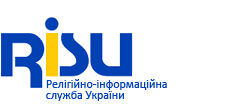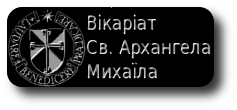
The fundamental gestures
Category:
- Communion and Liberation
Some who come into contact with the life of CL members are surprised to realize that theirs is a normal life, in the sense that adherence to the Movement does not involve any special obligations or strange customs.
One of its characteristics, to which the Movement has always held fast and which distinguishes it immediately from traditional Catholic associations, is the absence of any form of application for membership and the emphasis on the importance of the individual's free adherence to the contents and educative method of the movement. Equally freely, the CL experience indicates some fundamental gestures for a personal and community journey of education to faith. These are "fundamental" gestures, but none of them is considered obligatory.
Prayer
One of the distinguishing traits of the Movement is its attention to acts of personal and community prayer. To this purpose, from CL's earliest years, a Book of Hours was published, with ecclesiastical imprimatur, reproducing part of the Breviary prayed by the universal Church. Special attention has always been reserved to songs for the liturgy and the learning of hymns and canticles from tradition. This attention has led to the "invention" of a sort of Liturgy of the Easter Triduum, made up in a powerfully evocative way of Bible readings, passages from the poetic works of Christian meditation by Charles Péguy, and choral and musical passages from the liturgical tradition and from the repertory of the greatest works inspired by religious themes, like Mozart's Requiem or Pergolesi's Stabat Mater.
Participation in the liturgy and the sacraments, the habit of reciting the Angelus and of repeating particularly significant traditional ejaculatory prayers (like Veni Sancte Spiritus, Veni per Mariam) tends to generate in CL adherents a familiarity with prayer in its truest and simplest sense. This is, in fact, the origin of communion and the first fruit of an authentically experienced community life. Prayer is the expression of a dependence on the Other that every reasonable and realistic person feels.
School of Community
Besides the invitation to prayer and regular practice of the sacraments addressed to every Catholic, Fr Giussani's movement invites its members and anyone else who wishes to participate in a gesture, usually weekly, of discussion and catechism. In the beginning, in Gioventù Studentesca life, a similar function was filled by the "Raggio," or "Ray," a meeting on a theme established by the outline for the day. The outlines normally treated basic topics: not questions to give participants a chance to match their wits or indulge in subtle explanations, pure exegesis of Gospel or Pauline texts, but matters having to do with life, to make it easier to communicate who one is and to share the needs of others.
"School of Community" aims at being a true school which, through the reading and discussion of texts indicated by the Movement's Center, shapes in its participants a clearer understanding of the nature of the Christian fact and illuminates their life. The assigned texts usually come from the teachings of the Church or Fr Giussani's writings.
School of Community is the customary moment for catechism and meeting together, for high school and university youth and for adults.
Just as Fr Giussani has indicated for every gesture of the community, School of Community too is "public," something of value offered to everyone, in the sense that it is open to participation to all and is often publicly proposed in places of study or work.
Charitable work
The proposal of charitable work, which has involved tens of thousands of youths and adults ever since the beginning of GS, has always been clearly explained. It is not a matter of doing philanthropic projects or claiming to offer exhaustive answers to needs that are often vast and complex, but of learning, through faithfully performing an exemplary gesture, that the ultimate law of existence is charity, gratuitousness.
This "school" of gratuitousness has given rise in Italy and throughout the world, through the free and responsible initiative of CL members or with their collaboration, to a vast series of large and small activities with a charitable purpose, in the most disparate fields: from teaching catechism to children in the oratory to keeping the elderly company in nursing homes, from taking children or adults in difficulty into their families to creating actual family-houses for the most difficult cases (unwed mothers, drug addicts, the mentally ill, persons with disabilities, terminally ill and AIDS patients); from the creation of business enterprises whose purpose is inserting persons with disabilities into the workplace to the foundation of non-governmental organizations for projects of development and aid to emerging countries (for example, AVSI in Italy, an organization recognized by the UN, and CESAL in Spain); from the establishment of foundations like the Food Bank (which furnishes daily meals to almost a million poor people in Italy out of the surplus production of middle-sized and large food industries) to the creation of Solidarity Centers to help unemployed young (and not-so-young) people to find work; from assistance in the juvenile prisons of Africa and Latin America to simple economic help to families in difficulty.
Since in a great many cases these are initiatives which combine charitable purpose with a business-like organization, it could be said that these works continue, in an up-to-date manner and often under the umbrella of the not-for-profit sector, the tradition of the great works of charity which mark the history of Christianity.
Vacation
Vacations, especially those taken together at a locale in the mountains, have always been one of the most important moments for discovering the joy of Christian companionship and the attitude of wonder and respect to which it educates in the face of the reality of creation.
From the beginning, the first "observers" were astounded at how Fr Giussani would take even large groups of young people to the mountains for vacations, making of these moments (as opposed to what usually happens with school groups or even with many Catholic associations) an occasion of joyous and orderly companionship and of a strong Christian proposal.
Besides, it is during so-called free time that one can see what a boy or girl truly pays attention to in life and to what ideals they are dedicated.
These vacation times, whether lived in the group or within the individual family, are also a chance to offer to others the experience encountered in the movement.
Reading
Another of the ways in which CL educates its adherents to a critical sense, to a discovery of human dignity and the true face of the Church, is an invitation to the reading of books (for example through the so-called "book of the month") and to cultural work, urging them not to neglect the value of beauty as it emerges from certain masterpieces of classical music, painting, and cinema. CL members have become familiar with and found to be worthy of further study names like Dante, Leopardi, Pascoli, Ada Negri, Pasolini, Montale, Rebora, Claudel, Péguy, Eliot, Milosz, Solov'ev, De Lubac, Lagerkvist, Moeller, Mounier, along with Schubert, Beethoven, Mozart, Rachmaninov, Donizetti, and Giotto, Masaccio, Caravaggio, Antelami, as well as Dreyer and other giants of literature and the arts.
Singing
One of the gestures that marked the birth and has accompanied the development of Communion and Liberation is singing, especially group singing. "Singing," Fr Giussani has stated, "is the highest expression of man's heart. There is no service to the community that can compare with singing." Whether liturgical music, songs resulting from the experience of CL members (some of whom have been around the world) or taken from the popular repertory of other nations, attention to group singing is one of the distinguishing traits of CL meetings. In song the community expresses its unity in a synthetic and persuasive way, and the gladness and new awareness that arise from that unity.
Common fund
From the Movement's beginnings, one of its most educative actions has been the so-called "common fund." This is a fund whose aim is the furthering of the Movement's work through support of missionary, charitable, and cultural activities. Everyone gives freely to this fund, contributing monthly a percentage of income (at the beginning of the Movement's history this was called the "tithe"). The purpose of this gesture is to witness to a communal concept of personal property and a growth in awareness of poverty as an evangelical virtue. The amount each one gives is not important, but what matters is the seriousness with which one fulfills this freely made commitment. It is this seriousness that permits each person to be educated to charity.
http://www.clonline.org/storiatext/eng/comlibe/gesti.htm














